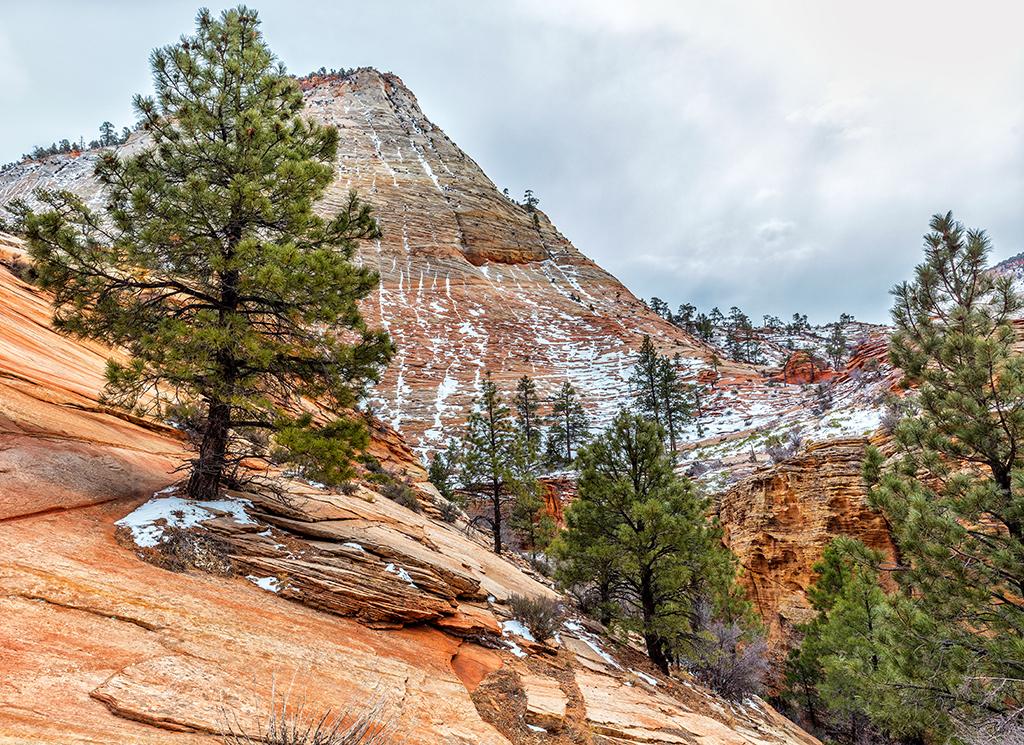
Winter scenery, Zion National Park / Rebecca Latson
Awhile back, I wrote an article for the Traveler about how photos not only teach both photographer and viewer, but spark curiosity to learn more about a national park. I recently learned that contributing writer Dr. Bob Janiskee, an Emeritus Distinguished Professor of Geography of the University of South Carolina, penned 100 national parks quizzes for the Traveler. Now, I’m not as well-traveled, nor am I as national park-savvy as Dr. Janiskee, but I do have access to a computer as well as several national parks trivia books, with a couple more on order. I thought the idea of creating a national park quiz might be kind of fun. It turned out to be a little harder than I thought it would be, actually, but it was still fun and I learned things in the process. I decided to mix a few questions with a little bit of national park trivia. Let me know what you think. The questions might be too easy. The answers to the questions are at the very bottom of this article. The books and websites from which these questions and trivia derive are also referenced at the end of the article.
And hey, before you Google the answer, first take a guess just to see how well you know your national parks.
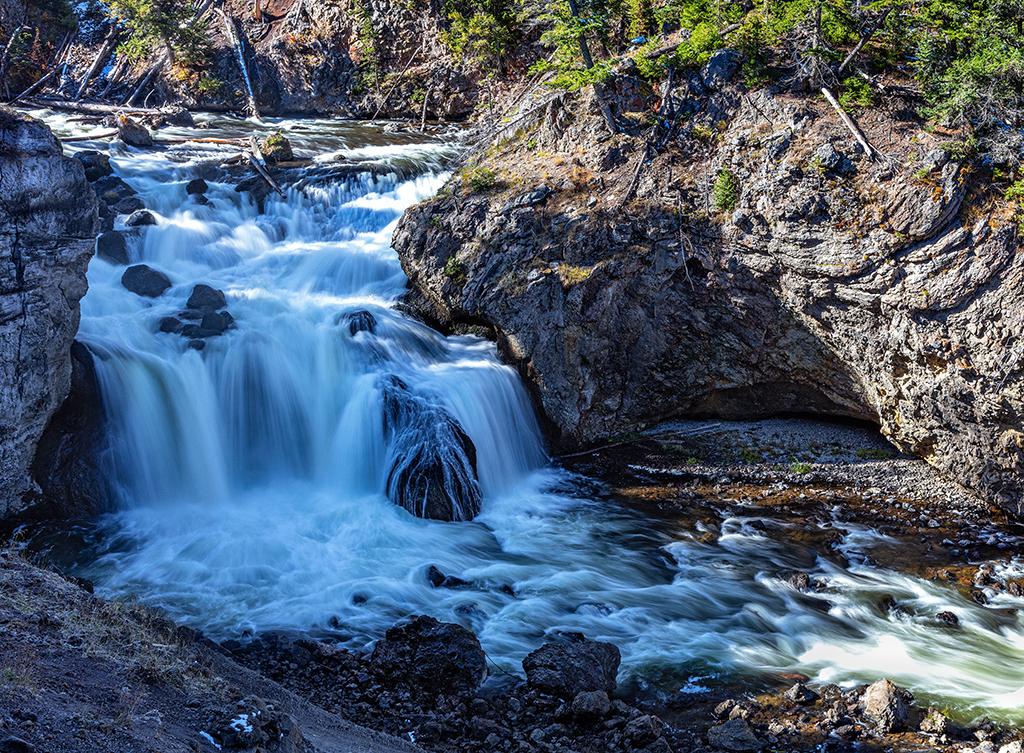
Firehole Falls, Yellowstone National Park / Rebecca Latson
1. The Firehole River where it begins above Upper Geyser Basin in Yellowstone National Park, is a cold mountain stream with a typical mid-July water temperature of about 50 degrees Fahrenheit. By the time it reaches Firehole Falls below Lower Geyser Basin – a distance of about 12 miles, as the crow flies – what is the river’s water temperature?
a.) 60 degrees F
b.) 85 degrees F
c.) 110 degrees F
d.) 120 degrees F
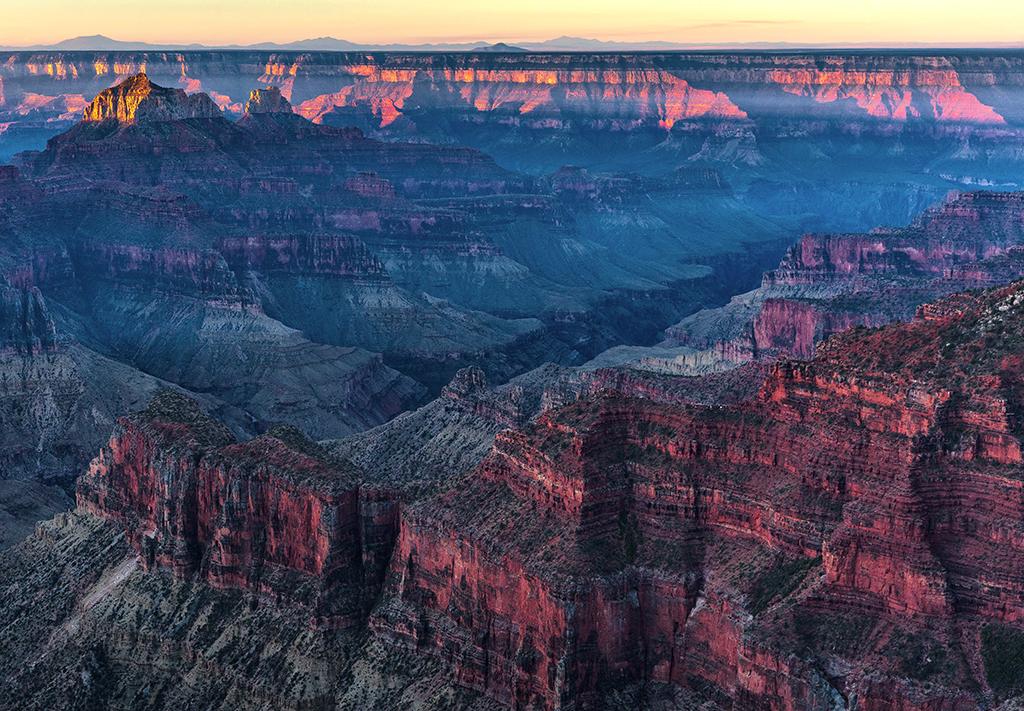
Sunrise over the North Rim, Grand Canyon National Park / Rebecca Latson
2. The Great Pyramid of Giza was the tallest of the seven wonders of the ancient world. How many could you stack up inside the Grand Canyon?
a.) 5
b.) 7
c.) 11
d.) 15
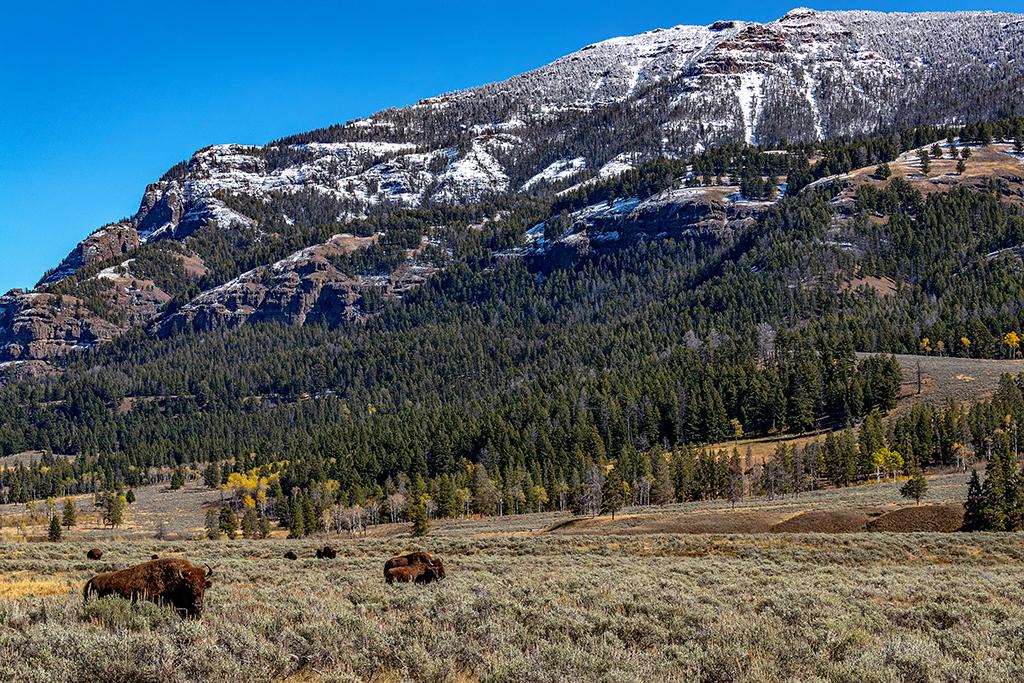
Bison roaming the Lamar Valley, Yellowstone National Park / Rebecca Latson
3. You can see bison herds in Yellowstone National Park, Grand Teton National Park, and Theodore Roosevelt National Park. Bison once numbered in the 30-60 million range, but at one point, were almost hunted to extinction. By 1884, about how many wild bison were left in the United States?
a.) 450
b.) 500
c.) 325
d.) 245
4. Death Valley National Park is hot and dry. The record temperature high temperature for this park is:
a.) 125 degrees F
b.) 134 degrees F
c.) 140 degrees F
d.) 115 degrees F
5. What is the number of mature giant sequoia trees in Yosemite National Park’s Mariposa Grove?
a.) 200
b.) 300
c.) 400
d.) 500
6. There are 23 snake species that live in Everglades National Park. Of that number, how many are venomous:
a.) 2
b.) 10
c.) 4
d.) 23
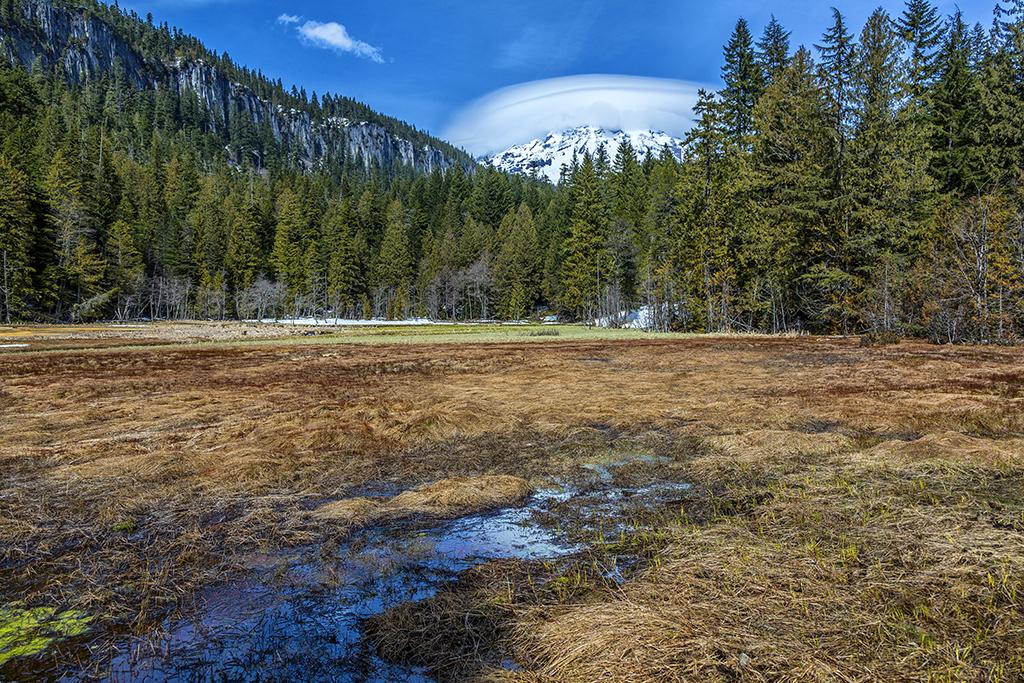
Spring at Longmire Meadow, Mount Rainier National Park / Rebecca Latson
7. Longmire, Washington, is the starting point for which hiking trail that takes visitors through Mount Rainier National Park?
a.) Pacific Crest Trail
b.) Overland Trail
c.) Wonderland Trail
d.) Appalachian Trail
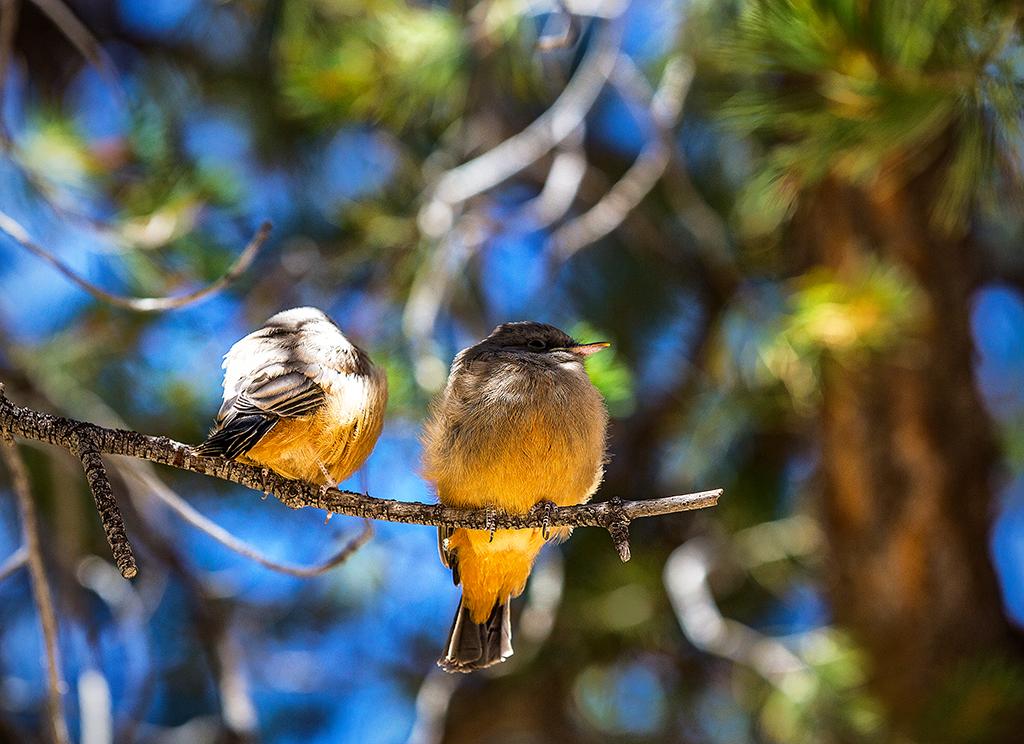
Say's Phoebe, Big Bend National Park / Rebecca Latson
8. The environments of the Chihuahuan Desert and the volcanic Chisos Mountains contribute to Big Bend National Park’s wide biological diversity. There are 75 species of mammals, 56 species of reptiles, and at least 1,200 species of plants. How many species of birds are there in this national park in Texas?
a.) 625
b.) 375
c.) 560
d.) 450
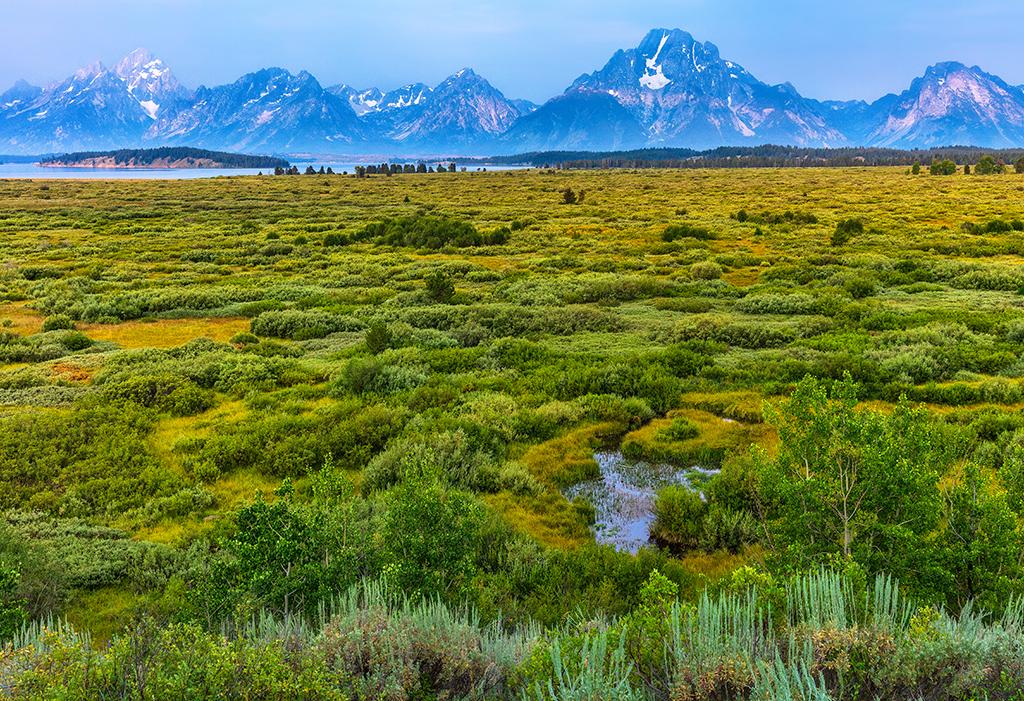
Early morning over Willow Flats, Grand Teton National Park / Rebecca Latson
9. What lakebed in Grand Teton National Park was scoured 800 feet deep by glaciers during the last ice age?
a.) Jenny Lake
b.) Jackson Lake
c.) Holly Lake
d.) String Lake
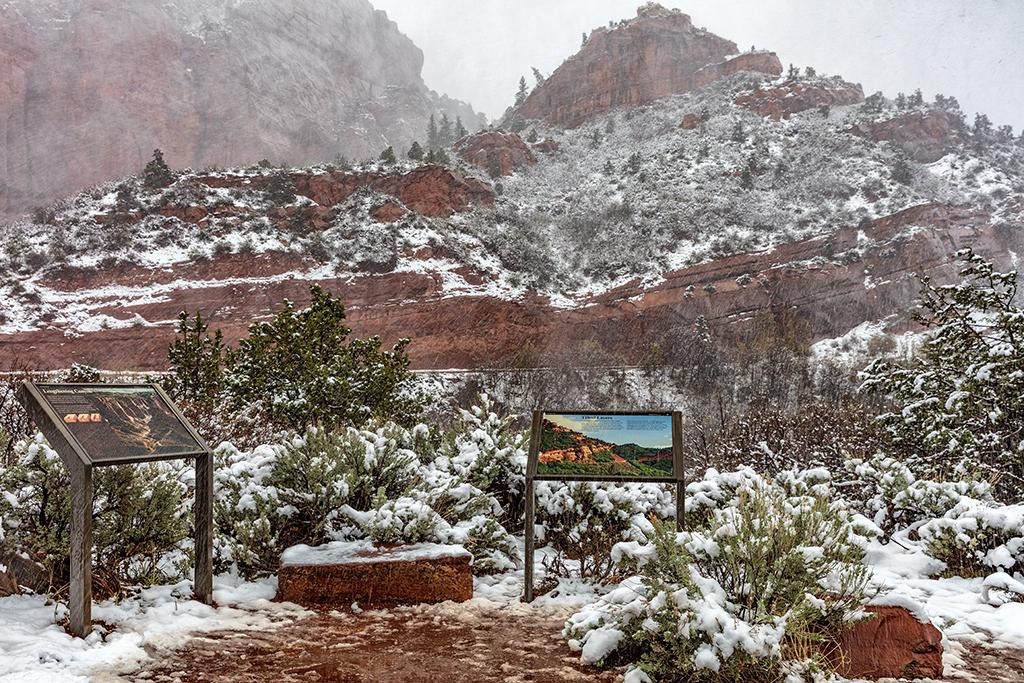
A snowy spring day in Kolob Canyon, Zion National Park / Rebecca Latson
10. What stands as the lowest recorded temperature in Zion National Park?
a.) -20 degrees F
b.) -25 degrees F
c.) -15 degrees F
d.) -17 degrees F
Ok, now for some national parks trivia with which you can impress your family, friends, and colleagues.
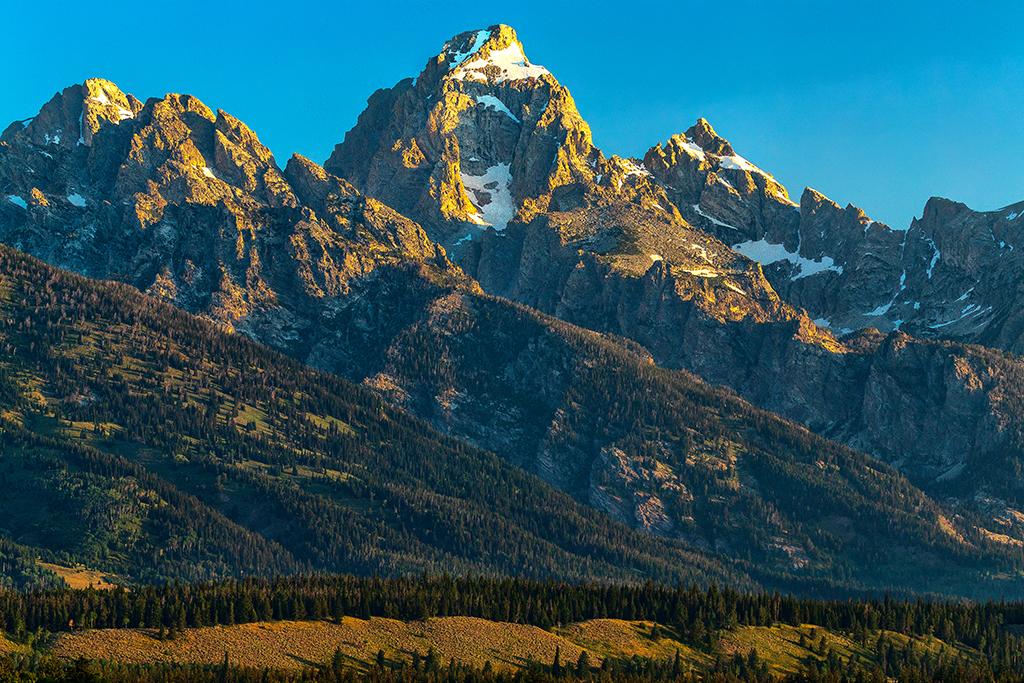
Morning sunlight over the mountains, Grand Teton National Park / Rebecca Latson
- Charles D. Walcott, head of the USGS, in 1898 came up with the idea of creating a national park to protect the Teton Mountains. He described the mountains as the “Switzerland of America.” Ultimately, it took 52 years to turn Grand Teton National Park from an idea to reality. That first year, five people staffed the national park, two of whom were seasonal.
- Haleakalā (hah-lee-ah-kah-lah) means "house of the sun" in the Hawaiian language. The story is that the demigod Maui lassoed the sun, took it prisoner, and placed it inside the volcano hoping daylight would then last a little longer so people could get more things done. Sunrise at the volcano in Haleakalā National Park is indeed so spectacular and so popular that visitors in personal or rental vehicles must make sunrise viewing reservations in advance of their visit to get a parking spot (reservations may be made up to 60 days in advance).
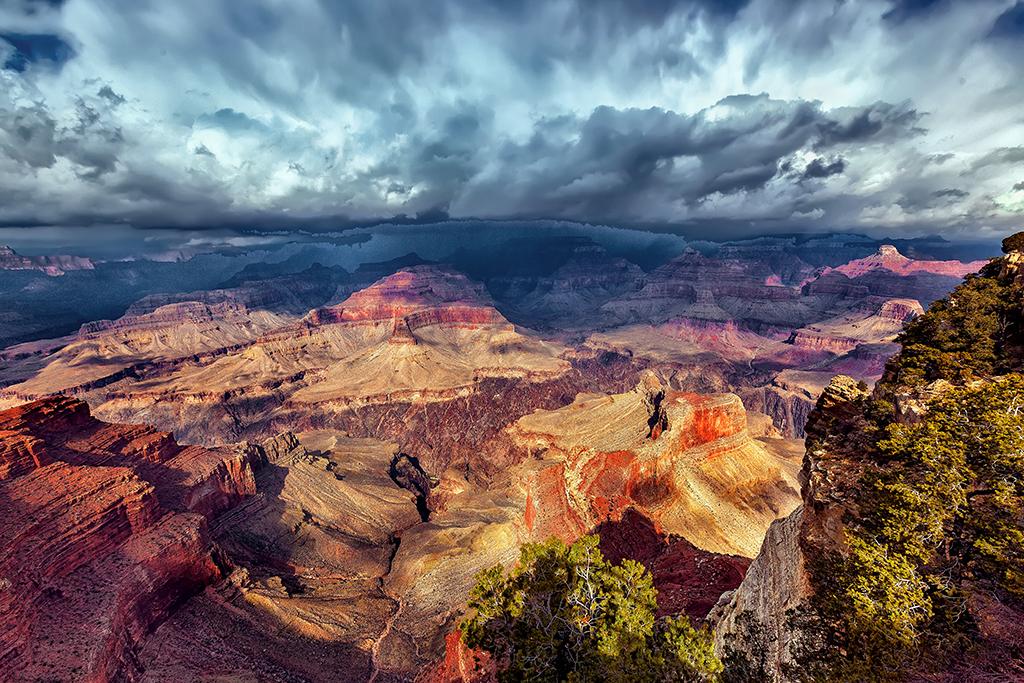
South Rim storm clouds, Grand Canyon National Park / Rebecca Latson
- Ponderosa pines are among the trees making up the rim forests in Grand Canyon National Park. They will grow a few hundred feet from the rim, but not right on the rim because the warm air rising from the inner canyon dries them out too much. The roots of ponderosa pines can be 100 feet in length and the trees can live 500 years or more. If you sniff the bark of a ponderosa, you’ll either smell butterscotch or vanilla. I, unfortunately, did not know this, so I never got close enough to smell the bark, and I feel the lesser for it. Next time, you can bet I’ll stick my nose right next to ponderosa pine bark for a good snort of a nice fragrance (I’ll let you know whether I smell butterscotch or vanilla).
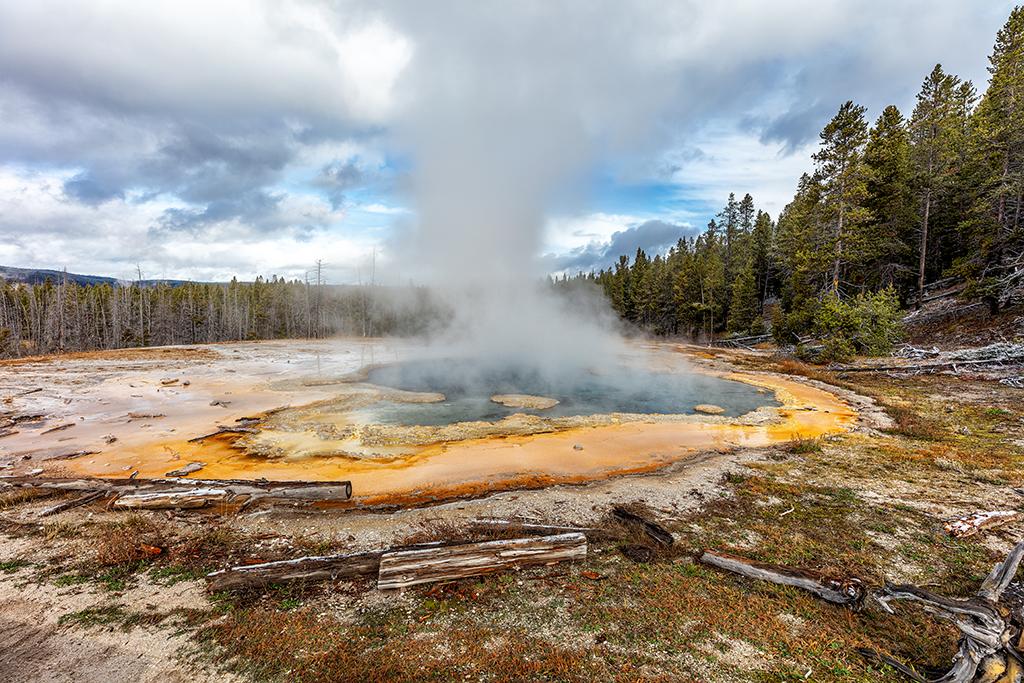
Solitary Geyser, Yellowstone National Park / Rebecca Latson
- Solitary Spring, in Upper Geyser Basin of Yellowstone National Park, became a geyser due to human intervention. Installing a pipe to channel the hot water to heat a swimming pool, the water level decreased, and Solitary Spring became a geyser that erupted every few minutes. The pipe was removed, and the water level rose again, but the spring still erupts about 4 feet in height every 5-7 minutes, give or take. On chilly autumn days, like the day the photo above was captured, it was difficult to see the eruption through the heavy steam because it’s more like a burble than a swoosh, and the only way I could tell an eruption was coming was to watch the water on the left side of the spring for ripples portending the coming event.
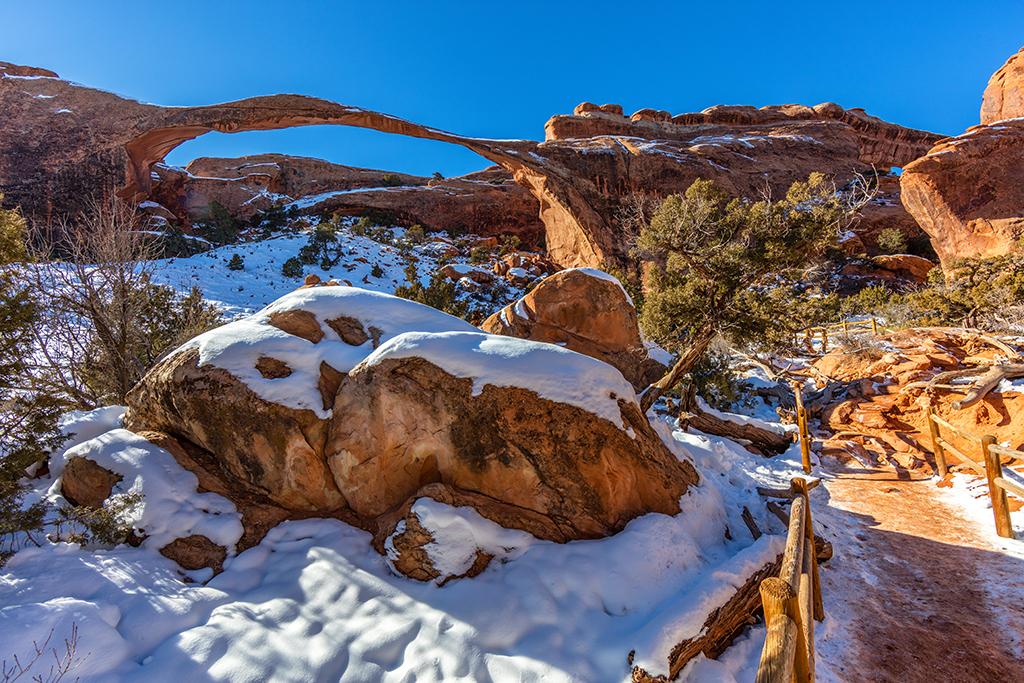
Landscape Arch, Arches National Park / Rebecca Latson
- Arches National Park has the most natural arches in the world (more than 2,000 of them), and, according to the Natural Arch and Bridge Society, Landscape Arch is the fifth-longest natural arch in the world, at 290 feet (but it’s the longest arch in the Western hemisphere). Kolob Arch, in Zion National Park, is considered to be the sixth-longest natural arch in the world, at 287 feet.
- Abraham Lincoln and Theodore Roosevelt have the most park system sites named for them:
- Abraham Lincoln Birthplace National Historic Site (Kentucky)
- Lincoln Memorial (D.C.)
- Lincoln Boyhood National Memorial (Indiana)
- Lincoln Home National Historic Site (Illinois)
- Theodore Roosevelt Island (D.C.)
- Theodore Roosevelt Birthplace National Historic Site (New York)
- Theodore Roosevelt Inaugural National Historic Site (New York)
- Theodore Roosevelt National Park (North Dakota)
Quiz Answers:
1. C - The river picks up heat as it passes through Upper, Midway, and Lower Geyser Basins. It's been estimated that the heat that goes into the Firehole River could melt seven tons of ice per minute.
2. C - The Great Pyramid is 481 feet high.
3. C - There were about 325 wild bison left, including 25 in Yellowstone, in 1884. “A multitude of efforts turned into a perfect storm to wipe out bison: hide hunters, sport hunters, the military’s efforts to deprive native cultures of food, shelter and clothing, and hunters employed by the railroads to feed railroad workers.”
4. B - The record high temperature (July 10, 1913).
5. D - The Grove's main attraction (and oldest tree), the Grizzly Giant, stands 209 feet tall, weighs 2 million pounds, and is about 2,700 years old.
6. C - Eastern diamondback rattlesnake, dusky pygmy rattlesnake, cottonmouth, coral snake.
7. C - The 93-mile Wonderland Trail exists entirely within Mount Rainier National Park
8. D - The Mexican jay, lucifer hummingbird, Colima warbler, and Say's phoebe are but a few of the 450 species of birds found in Big Bend National Park
9. B - Formed by the fault movement that created the Teton Mountains, Jackson Lake was then later deepened by glacial action.
10. A - The coldest temperature in Zion National Park was -20 degrees F recorded in 1989.
References:
Don Lago, Grand Canyon Trivia, Riverbend Publishing , 2009
Charlie Craighead, Grand Teton Trivia, Riverbend Publishing, 2009
The Bathroom Readers’ Institute, Uncle John’s Bathroom Reader Plunges Into National Parks, Advanced Marketing Services, Inc., 2007
Janet Spencer, Yellowstone Trivia, Riverbend Publishing, 2006
https://www.outdoorproject.com/articles/59-fun-facts-about-our-national-parks
https://www.nationalparked.com/big-bend
https://www.nationalgeographic.com/travel/quizzes/mount-rainier-quiz-part-1/



Add comment